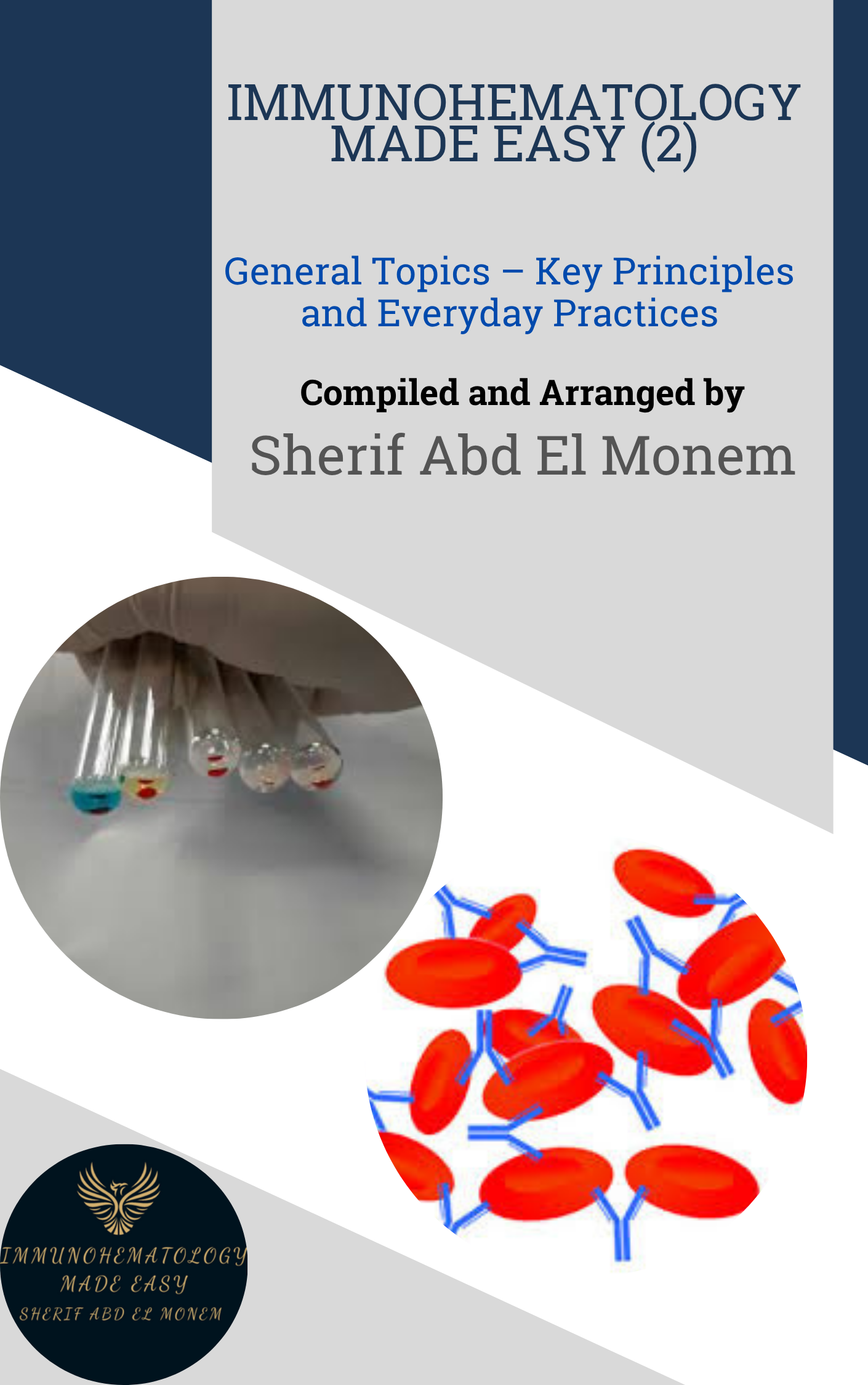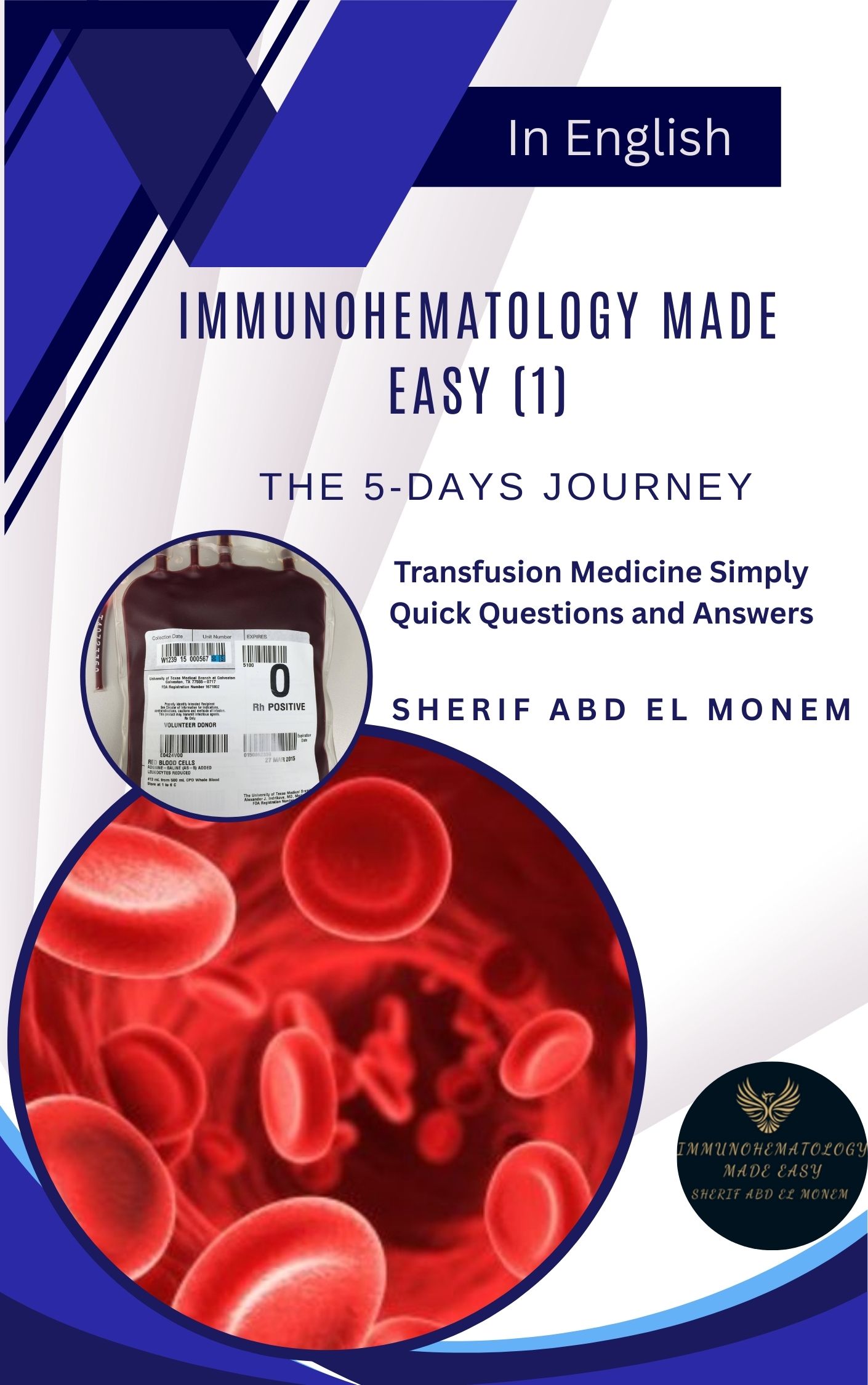The Blood Group Antigen FactsBook 3rd Edition - September 24, 2012


Immunohematology Made Easy (2)
General Topics – Key Principles and Everyday Practices
📘 Available now in PDF & EPUB formats
🔗 Visit Store
About the book from ELSEVIER
Description
The Blood Group Antigen FactsBook — winner of a 2013 Highly Commended BMA Medical Book Award for Internal Medicine — has been an essential resource in the hematology, transfusion and immunogenetics fields since its first publication in the late 1990s.The third edition of The Blood Group Antigen FactsBook has been completely revised, updated and expanded to cover all 33 blood group systems. It blends scientific background and clinical applications and provides busy researchers and clinicians with at-a-glance information on over 330 blood group antigens, including history and information on terminology, expression, chromosomal assignment, carrier molecular description, functions, molecular bases of antigens and phenotypes, effect of enzymes/chemicals, clinical significance, disease associations and key references.
Key Features
- Highly Commended 2013 BMA Medical Book Award for Internal Medicine
- Includes more than 330 entries on blood group antigens in individual factsheets
- Offers a logical and concise catalogue structure for each antigen in an improved interior design for quick reference
- Written by three international experts from the field of immunohematology and transfusion medicine
Table of Contents
Preface
Abbreviations
Useful Websites
SECTION I: The Introductory Chapters
1. Introduction
Aims of this FactsBook
Selection of entries
Terminology
References
2. Organization of the data
ISBT Blood Group Systems
ISBT Blood Group Antigens
ISBT Blood Group Collections
ISBT 700 Series of Low-Incidence Antigens
ISBT 901 Series of High-Incidence Antigens
References
SECTION II: The Blood Group Systems and Antigens
ABO. ABO Blood Group System
A Antigen
A1 Antigen
MNS. MNS Blood Group System
M Antigen
N Antigen
S Antigen
s Antigen
U Antigen
He Antigen
Mia Antigen
Mc Antigen
Vw Antigen
Mur Antigen
Mg Antigen
Vr Antigen
Me Antigen
Mta Antigen
Sta Antigen
Ria Antigen
Cla Antigen
Nya Antigen
Hut Antigen
Hil Antigen
Mv Antigen
Far Antigen
sD Antigen
Mit Antigen
Dantu Antigen
Hop Antigen
Nob Antigen
Ena Antigen
ENKT Antigen
‘N’ Antigen
Or Antigen
DANE Antigen
TSEN Antigen
MINY Antigen
MUT Antigen
SAT Antigen
ERIK Antigen
Osa Antigen
ENEP Antigen
ENEH Antigen
HAG Antigen
ENAV Antigen
MARS Antigen
ENDA Antigen
ENEV Antigen
MNTD Antigen
P1PK. P1PK Blood Group System
P1 Antigen
Pk Antigen
NOR Antigen
RH. Rh Blood Group System
D Antigen
C Antigen
c Antigen
e Antigen
f Antigen
CX Antigen
V Antigen
EW Antigen
Hr0 Antigen
hrS Antigen
VS Antigen
CG Antigen
CE Antigen
Rh26 (c-like) Antigen
cE Antigen
Rh32 Antigen
Rh33 Antigen
HrB Antigen
Rh35 Antigen
Evans Antigen
Rh39 Antigen
Rh41 Antigen
Rh42 Antigen
Crawford Antigen
Nou Antigen
Sec Antigen
STEM Antigen
FPTT Antigen
MAR Antigen
BARC Antigen
JAHK Antigen
DAK Antigen
LOCR Antigen
CENR Antigen
CEST Antigen
CELO Antigen
CEAG Antigen
LU. Lutheran Blood Group System
Lua Antigen
Lub Antigen
Lu3 Antigen
Lu4 Antigen
Lu5 Antigen
Lu6 Antigen
Lu7 Antigen
Lu8 Antigen
Lu9 Antigen
Lu11 Antigen
Lu12 Antigen
Lu13 Antigen
Lu14 Antigen
Lu16 Antigen
Lu17 Antigen
Aua Antigen
Aub Antigen
Lu20 Antigen
Lu21 Antigen
LURC Antigen
KEL. Kell Blood Group System
K Antigen
k Antigen
Kpa Antigen
Kpb Antigen
Ku Antigen
Jsa Antigen
Jsb Antigen
Ula Antigen
K11 Antigen
K12 Antigen
K13 Antigen
K14 Antigen
K16 Antigen
K18 Antigen
K19 Antigen
Km Antigen
Kpc Antigen
K22 Antigen
K23 Antigen
K24 Antigen
VLAN Antigen
TOU Antigen
RAZ Antigen
VONG Antigen
KALT Antigen
KTIM Antigen
KYO Antigen
KUCI Antigen
KANT Antigen
KASH Antigen
KELP Antigen
KETI Antigen
KHUL Antigen
LE. Lewis Blood Group System
Lea Antigen
Leb Antigen
Leab Antigen
LebH Antigen
ALeb Antigen
BLeb Antigen
FY. Duffy Blood Group System
Fya Antigen
Fyb Antigen
Fy3 Antigen
Fy6 Antigen
JK. Kidd Blood Group System
Jka Antigen
Jkb Antigen
Jk3 Antigen
DI. Diego Blood Group System
Dia Antigen
Dib Antigen
Wra Antigen
Wrb Antigen
Wda Antigen
Rba Antigen
WARR Antigen
ELO Antigen
Wu Antigen
Bpa Antigen
Moa Antigen
Hga Antigen
Vga Antigen
Swa Antigen
BOW Antigen
NFLD Antigen
Jna Antigen
KREP Antigen
Tra Antigen
Fra Antigen
SW1 Antigen
DISK Antigen
YT. Yt Blood Group System
Yta Antigen
Ytb Antigen
XG. Xg Blood Group System
Xga Antigen
SC. Scianna Blood Group System
Sc1 Antigen
Sc2 Antigen
Sc3 Antigen
Sc4 Antigen
STAR Antigen
SCER Antigen
SCAN Antigen
DO. Dombrock Blood Group System
Doa Antigen
Dob Antigen
Gya Antigen
Hy Antigen
Joa Antigen
DOYA Antigen
DOMR Antigen
DOLG Antigen
CO. Colton Blood Group System
Coa Antigen
Cob Antigen
Co3 Antigen
Co4 Antigen
LW. Landsteiner-Wiener Blood Group System
LWa Antigen
LWab Antigen
LWb Antigen
CH/RG. Chido/Rodgers Blood Group System
Ch1 Antigen
Ch2 Antigen
Ch3 Antigen
Ch4 Antigen
Ch5 Antigen
Ch6 Antigen
WH Antigen
Rg1 Antigen
Rg2 Antigen
H. H Blood Group System
H Antigen
XK. Kx Blood Group System
Kx Antigen
GE. Gerbich Blood Group System
Ge2 Antigen
Ge3 Antigen
Ge4 Antigen
Wb Antigen
Lsa Antigen
Ana Antigen
Dha Antigen
GEIS Antigen
GEPL Antigen
GEAT Antigen
GETI Antigen
CROM. Cromer Blood Group System
Cra Antigen
Tca Antigen
Tcb Antigen
Tcc Antigen
Dra Antigen
Esa Antigen
IFC Antigen
WESa Antigen
WESb Antigen
UMC Antigen
GUTI Antigen
SERF Antigen
ZENA Antigen
CROV Antigen
CRAM Antigen
CROZ Antigen
KN. Knops Blood Group System
Kna Antigen
Knb Antigen
McCa Antigen
Sla Antigen
Yka Antigen
McCb Antigen
Vil Antigen
Sl3 Antigen
KCAM Antigen
IN. Indian Blood Group System
Ina Antigen
Inb Antigen
INFI Antigen
INJA Antigen
OK. Ok Blood Group System
Oka Antigen
OKGV Antigen
OKVM Antigen
RAPH. Raph Blood Group System
MER2 Antigen
JMH. John Milton Hagen Blood Group System
JMH Antigen
JMHK Antigen
JMHL Antigen
JMHG Antigen
JMHM Antigen
JMHQ Antigen
I. I Blood Group System
I Antigen
GLOB. Globoside Blood Group System
P Antigen
Gill. Gill Blood Group System
GIL Antigen
RHAG. Rh-Associated Glycoprotein Blood Group System
Duclos Antigen
Ola Antigen
DSLK Antigen
RHAG4 Antigen
FORS. FORS Blood Group System
FORS1 Antigen
JR. JR Blood Group System
Jra Antigen
LAN. Lan Blood Group System
Lan Antigen
Collections. Blood Group Collections
Csa Antigen
Csb Antigen
Ii. Ii Blood Group Collection
i Antigen
ER. Er Blood Group Collection
Erb Antigen
Er3 Antigen
GLOB. Globoside Blood Group Collection
PX2 Antigen
210. Unnamed Blood Group Collection
Led Antigen
VEL. Vel Blood Group Collection
Vel Antigen
ABTI Antigen
MN CHO. MN CHO Blood Group Collection
Hu Antigen
M1 Antigen
Tm Antigen
Can Antigen
Sext Antigen
Sj Antigen
700 Series. The 700 Series of Low-Incidence Antigens
700 Series of Low-Incidence Antigens
901 Series. The 901 Series of High-Incidence Antigens
Ata Antigen
Emm Antigen
AnWj Antigen
Sda Antigen
PEL Antigen
MAM Antigen
SECTION III: Other Useful Facts
Section III. Other Useful Facts
Usefulness of the effect of enzymes and DTT on antigens in antibody identification
Effect of acid on antigen expression
Effect of chloroquine diphosphate on antigen expression
Substrate specificity of selected enzymes for peptide and CHO bonds
Mixed Field Agglutination may be observed in:
Blood group antigens absent (altered) on selected RBC phenotypes
Biosynthetic pathways
Antigens with lactosylceramide as a precursor
High prevalence antigens absent (and selected phenotypes) in certain ethnic populations
Low-prevalence antigens present in certain ethnic populations
Clinical significance of some alloantibodies to blood group antigens
Characteristics of some blood group alloantibodies
Antigen-negative prevalence for some polymorphic antigens
Potentially useful information for problem-solving in immunohematology
Alloantibodies that may have in vitro hemolytic properties
Conditions associated with suppression (sometimes total) or with alteration of antigen expression
Causes of apparent in vivo hemolysis
Target antigen suppression
Drugs associated with immune hemolytic anemia and/or positive DAT in which drug-dependent antibodies were detected
Drugs associated with cases of immune hemolytic anemia and/or positive DAT caused by drug-independent antibodies (autoantibodies)
Drugs associated with the detection of non-immunologic protein adsorption onto RBCs
Blood group systems and their gene products
Proteins altered on Rhnull RBCs
Blood Group Proteins, Mr, abundance, and selected reactive monoclonal antibodies (MAbs)
Changes in numbering of nucleotides and amino acids
Some causes of pseudo-discrepancies between genotype and phenotype
Chromosomal location of genes encoding or influencing the expression of blood groups
Some lectins and their simple specificities
Polyagglutination types, and the expected reactions with group O^ RBCs and lectins
Diagrammatic representation of Cad, Tn, T, Tk, and acquired B
About the Authors
Marion Reid
Affiliations and Expertise
Christine Lomas-Francis
Affiliations and Expertise
Martin Olsson
Affiliations and Expertise

Immunohematology Made Easy (2)
General Topics – Key Principles and Everyday Practices
📘 Available now in PDF & EPUB formats
🔗 Visit Store

Immunohematology Made Easy (2)
General Topics – Key Principles and Everyday Practices
📘 Available now in PDF & EPUB formats
🔗 Visit Store

📘 New to Blood Bank?
Start your 5-day journey with Immunohematology Made Easy — a simple, beginner-friendly guide with real-life examples!
👉 Get Your Copy Now